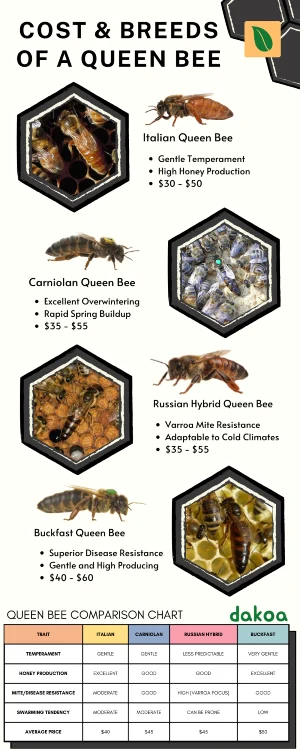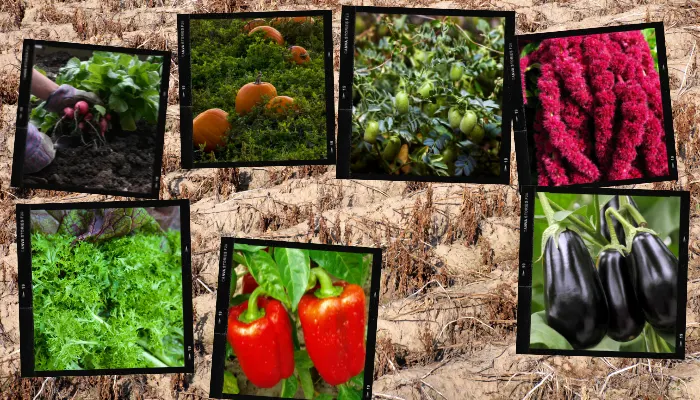The queen bee is the heart and soul of any honey bee colony. She lays all the eggs, keeping the hive thriving. If your queen dies, becomes unproductive, or you want to expand your apiary, knowing where to find a new queen bee and understanding the factors affecting her price is vital. In this guide, we’ll break down queen bee costs, popular breeds, and where to find your perfect queen.
Queen Bee Breeds: Your Guide to Making the Best Choice
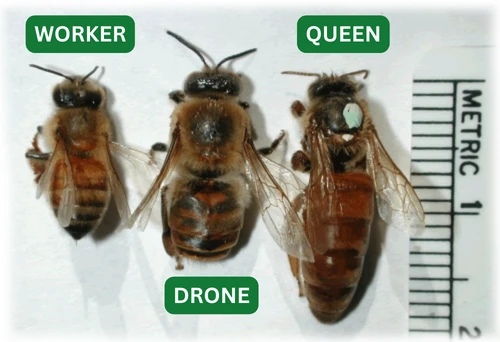
Italian Queen Bees – A Beekeeper's Top Pick for Versatility and Productivity

- Expect to pay between $30 and $50 for a mated Italian queen bee.
Among the array of choices for queen bees, Italian queen bees (Apis mellifera ligustica) are the globally preferred option among both new beekeepers and seasoned professionals.
These queens, with their distinctive golden hue, are celebrated for their mild disposition, remarkable for high honey production, and their ability to rapidly expand their colonies in the spring. This versatility makes them an excellent fit for diverse beekeeping climates and setups, contributing significantly to their status as a top choice.
When considering adding an Italian queen bee to your hive, the investment ranges from $30 to $50 for a mated queen. This price reflects not only the quality of the breed but also the potential for enhancing your beekeeping operation with a queen known for her docile nature, high egg-laying capacity, and superior honey-generating abilities. These traits ensure a robust colony with a strong start in the early season.
Advantages:
- Gentle Temperament: Their calm nature means smoother hive inspections and handling, an attribute especially beneficial for new beekeepers looking to gain confidence in their beekeeping practices.
- Egg-Laying Prowess: Italian queens can lay a significant number of eggs, fostering a populous and vigorous colony, which is crucial for a thriving bee supply.
- Prolific Honey Production: These queens are excellent honey producers, making them a valuable asset for beekeepers aiming for high honey yield.
- Swift Spring Development: They’re known for their quick buildup as the weather warms, a trait that ensures a productive season ahead.
Considerations:
- Swarming Tendencies: Italian queens have an average propensity to swarm, necessitating vigilant management practices.
- Mite Management: They might demand more proactive measures against mites, including varroa sensitive hygiene practices, to maintain colony health.
- Climate Adaptability: While versatile, they are not the best suited for extremely cold environments, where other breeds might excel.
Best For: Italian queen bees are highly recommended for both novice and experienced beekeepers across a variety of climates. Their combination of a gentle nature, exceptional honey production, and rapid colony growth in spring positions them as an outstanding selection for anyone prioritizing ease of management, productivity, and a strong start to the beekeeping season.
Incorporating Italian queens into your beekeeping supplies not only promises a boost in honey production but also ensures a more manageable and resilient colony, making them a cornerstone for successful beekeeping operations. Whether you’re establishing a new hive or enhancing an existing colony, Italian queen bees offer a blend of qualities that cater to the essentials of effective beekeeping.
Carniolan Queen Bees – The Resilient Choice for Varied Climates

- Carniolan queen bees typically cost between $35 and $55.
Carniolan queen bees (Apis mellifera carnica), renowned for their remarkable adaptability to diverse environmental conditions, stand out as a favored option among beekeepers. These queens, characterized by their darker brown hues and distinctive gray striping, excel in both cold and moderate climates, thanks to their gentle disposition and efficient honey production capabilities. Their resilience and adaptability make them particularly appealing for beekeeping operations across a wide range of climates.
Investing in a Carniolan queen bee involves a price range of $35 to $55, a reflection of their superior traits and suitability for various beekeeping challenges. These queens are celebrated for their ease of handling due to their docile nature, exceptional overwintering skills that are perfect for cooler regions, and their ability to quickly ramp up the colony’s population in the spring, ensuring a productive season ahead.
Advantages:
- Ease of Management: The gentle nature of Carniolan queens simplifies hive management and inspections, a significant plus for both novice and experienced beekeepers.
- Exceptional Overwintering: Their ability to thrive in colder climates, coupled with excellent overwintering capabilities, ensures a strong, surviving colony even in less-than-ideal conditions.
- Spring Vigor: A rapid population increase in the spring allows for a swift start to the honey production season, capitalizing on available resources.
- Consistent Honey Production: Despite environmental challenges, these queens maintain a steady output of honey, contributing to the beekeeping operation’s success.
Considerations:
- Swarming Propensity: Like many breeds, Carniolan queens may exhibit a higher likelihood of swarming, necessitating proactive management strategies to mitigate this behavior.
Ideal For: Beekeepers facing the challenges of fluctuating temperatures and shorter seasons of honey flow will find Carniolan queens to be an excellent match. Their adaptability, coupled with robust overwintering abilities, positions them as a resilient choice capable of navigating the complexities of different climates.
By choosing Carniolan queen bees for your beekeeping supplies, you not only secure a breed known for its gentle handling and mite resistance but also invest in a lineage that promises high honey production and strong colonies, even in the face of variable weather patterns. Essentially, you’re making a commitment to sustainable beekeeping practices by emphasizing the importance of adaptability, disease resistance, and the well-being of the colony. Whether you’re a new beekeeper or a seasoned professional, incorporating Carniolan queens into your beekeeping operation offers a pathway to resilience and productivity amidst the challenges of climate and environment.
Russian Hybrid Queen Bees – Varroa Mite Resilience with a Spirited Edge
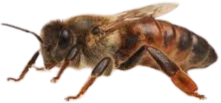
- Prices are similar to Italian and Carniolan queens.
Russian Hybrid queen bees, engineered for their formidable defense against Varroa mites, stand as a beacon of hope for beekeepers combatting this pervasive threat. These queens bring a blend of valuable traits to the table, notably their mite resistance, which significantly reduces reliance on chemical interventions. However, their spirited nature may require additional consideration for those accustomed to the more predictable temperaments of Italian or Carniolan queens.
The cost of acquiring a Russian Hybrid queen aligns with that of Italian and Carniolan varieties, making them an accessible option for beekeepers looking to enhance their colonies’ resilience against pests without breaking the bank.
Advantages:
- Varroa Mite Resistance: Their innate ability to withstand Varroa mite infestations stands out as their most significant asset, offering a more natural approach to pest management.
- Robust Honey Production: Russian Hybrids possess a strong potential for honey production, contributing to the sustainability and profitability of beekeeping endeavors.
- Climate Versatility: Their adaptability to cooler environments ensures that beekeepers in diverse climates can benefit from their inclusion in the bee yard.
Considerations:
- Variable Temperament: The temperament of Russian Hybrid queens may vary more than their Italian or Carniolan counterparts, necessitating a hands-on approach to hive management.
- Swarming Tendency: Like other breeds, these queens may exhibit a propensity to swarm, requiring vigilant oversight by the beekeeper to prevent loss of colony members.
Ideal For: Beekeepers who place a high priority on Varroa mite resistance and are equipped to handle the dynamic nature of Russian Hybrids will find these queens to be a valuable addition to their operations.
Their capacity for high honey production, coupled with disease resistance, makes them a compelling choice for those looking to maintain strong, healthy colonies while minimizing chemical treatments.
Incorporating Russian Hybrid queen bees into your beekeeping supplies not only elevates your colony’s defense against Varroa mites but also contributes to a more sustainable and environmentally friendly approach to beekeeping. These queens are a practical solution to pest management, aligning with practices that favor mite resistance and disease resistance, thereby ensuring the health and vigor of the beekeeping operation.
For beekeepers willing to navigate the challenges of their spirited nature, Russian Hybrids offer a path to resilience, productivity, and a reduced need for chemical interventions in the fight against Varroa mites.
Buckfast Queen Bees – The Pinnacle of Gentleness and Honey Production

- Prices are often slightly higher than other popular queen breeds.
Buckfast queen bees emerge as the epitome of hybrid vigor, celebrated for their exceptionally calm demeanor and outstanding honey production qualities. These queens are the result of meticulous breeding programs aimed at optimizing both temperament and productivity, marking them as a distinguished choice among beekeepers who value ease of management and high yield.
While the investment in a Buckfast queen may be slightly more than for other popular breeds, the return in terms of colony health, honey output, and beekeeping satisfaction often justifies the premium.
Advantages:
- Unmatched Gentleness: Buckfast queens lead the way in terms of gentleness, making them ideal for beekeepers who prioritize ease of handling and minimal stress during hive inspections.
- Superior Honey Production: Their capability to produce significant quantities of honey sets them apart, ensuring that beekeepers can look forward to abundant harvests.
- Enhanced Disease Resistance: These queens exhibit strong resistance to tracheal mites and other common bee diseases, contributing to the overall health and longevity of the colony.
Considerations:
- Availability: Due to their specialized breeding, Buckfast queens might not be as readily available as Italian or Carniolan queens, requiring a bit more effort to source.
- Climate Sensitivity: While adaptable to a range of environments, they may not perform as well in extremely hot conditions, potentially limiting their suitability in certain geographical areas.
Ideal For: Buckfast queens are a top choice for both novice and seasoned beekeepers who seek a harmonious balance between docility, productivity, and health within their hives. Their gentle nature facilitates a pleasant beekeeping experience, while their prowess in honey production and disease resistance ensures a thriving colony.
By integrating Buckfast queen bees into your beekeeping operation, you not only enhance the temperament and productivity of your colony but also contribute to a sustainable and profitable beekeeping endeavor. Their unique qualities, including good queen, high honey production, and disease resistance, align with the goals of both hobbyist and professional beekeepers alike. Whether you’re establishing a new hive or upgrading an existing one, Buckfast queens offer a blend of benefits that can elevate your beekeeping to new heights, provided you can navigate the challenges of sourcing these exceptional queens.
Queen Bee Breeds Comparison Chart
Temperament
Honey Production
Mite/Disease Resistance
Swarming Tendency
Average Price
Italian
Gentle
Excellent
Moderate
Moderate
$30 – $50
Carniolan
Gentle
Good
Good
Moderate
$35 – $55
Russian
Less Predictable
Good
High (Varroa focus)
Can be prone
$35 – $55
Buckfast
Very Gentle
Excellent
Good
Low
$40 – $60
What Impacts Queen Bee Prices
The cost of a queen bee isn’t set in stone. It fluctuates due to various factors that beekeepers need to understand:
- Mated vs. Virgin: Mated queens, already mated with drones and ready to start laying eggs immediately, naturally command a higher price than virgin queens, who still need to go on mating flights.
- Time of Year: Demand peaks in early spring, making queen bees more expensive during this season. Prices may decrease slightly as the season progresses.
- Quantity: Bulk orders often come with discounts. If you’re establishing multiple hives or need replacement queens, purchasing in quantity can save you money.
- Shipping: Shipping costs add to the overall price of your queen bee. Many reputable suppliers offer free shipping on orders over a certain amount.
- Breeder Reputation: Well-established bee breeders with carefully implemented breeding programs may charge slightly more for queens known for their desirable traits like exceptional honey production, disease resistance, or gentleness.
- Specialties: Queens with advanced hygienic behaviors like Varroa Sensitive Hygiene (VSH), a trait that helps bees detect and remove mite-infested brood, may have a premium price due to the complex breeding required.
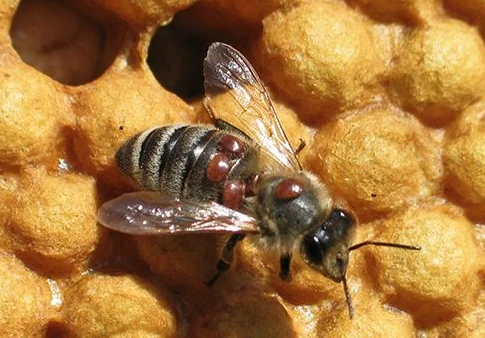
Where to Buy Your Queen Bee
Finding a reputable supplier with healthy, high-quality queen bees is essential for the success of your hive. Here are the best places to start your search:
- Reputable Bee Supply Stores:
- Mann Lake Ltd: A comprehensive selection of queen bees, beekeeping equipment, and educational resources.
- Dadant & Sons:A long-standing company known for quality beekeeping supplies and excellent customer support.
- Local Beekeepers: Connect with your local beekeeping association or search online (using keywords like “[your state] queen bees”) to find reputable breeders in your area. Advantages of buying locally include:
- Queens well-adapted to your specific climate
- Potential for earlier availability in the season
- Supporting your local beekeeping community
- Online Retailers: Many online stores specialize in selling queen bees and beekeeping supplies. Before ordering, check their reviews and ensure they have a good reputation for healthy bees and reliable shipping. Here are a few reputable options:
Where Do My Backyard Bees Live?
Additional Tips for Buying a Queen Bee
Securing the right queen bee for your apiary is a critical step in ensuring the prosperity and health of your beekeeping endeavor. Whether you’re a seasoned professional or stepping into the world of beekeeping as a new beekeeper, the following tips are designed to guide you through the process.
Strategic Planning
To navigate the peak demands of the spring season, you’ll want to schedule your queen bee orders well ahead of time. Early planning affords you a broader selection and the best chance to obtain high-quality queen bees, such as Italian queen bees or Buckfast queens, from reputable bee supply sources. This shrewd planning is particularly helpful for those looking to establish a new hive or enhance an existing colony with a mated queen bee or breeder queens known for specific desirable traits like mite resistance or high honey production.
Opting for Packages or Nucleus (Nuc) Colonies
For newcomers to beekeeping, embarking on your journey with a package of bees or a nucleus colony is advisable. These options include a queen bee alongside a supportive group of worker bees or a small, already functioning hive, respectively. This approach guarantees a smoother queen introduction process, and significantly increases the likelihood of your hive’s success, thanks to the built-in support system for your new queen.
Vendor Vetting
The choice of bee breeders or suppliers is paramount. Look for those with an established reputation, glowing customer feedback, and a transparent approach to their breeding and beekeeping practices. Inquiries into their disease resistance measures and hygienic beekeeping techniques can provide insight into the health and quality of their bees, including virgin queen bees, Carniolan queen bees, or pol-line queens, depending on your beekeeping goals and preferences.
Shipping Smart
When it comes to delivery, prioritize suppliers offering express shipping with tracking to reduce the queen’s time in transit, thus ensuring her arrival in optimal condition. Many suppliers also provide free shipping for bulk orders, which can be an economically sound strategy, especially when planning for the acquisition of multiple queens or bee packages.

Upon Arrival Inspection:
- Ensure the queen cage is undamaged, with no deceased attendant bees inside.
- Observe the queen’s activity level; she should be lively and mobile within her cage.
- Any anomalies should prompt immediate communication with the supplier to address potential issues promptly.
Hive Preparation
Before the queen’s introduction, confirm the readiness of your existing colony. This includes tackling any pest or disease concerns and verifying that the hive has sufficient food stores. A healthy, welcoming environment is crucial for the successful integration of a new queen bee.
Introduction Techniques Mastery
Familiarize yourself with various queen introduction methods, ranging from direct release to slow release via introduction cages. Selecting a method that aligns with your experience level and the specific conditions of your hive can significantly influence the successful acceptance of the new queen by your colony.
Introducing A New Queen To Your Hive
Incorporating these advanced tips into your queen bee purchasing and introduction strategy not only enriches your beekeeping knowledge but also prepares you for a rewarding beekeeping season. By emphasizing the importance of preparation, research, and careful selection, you set the stage for a thriving colony that can support your beekeeping ambitions, whether they’re focused on honey production, bee conservation, or expanding your beekeeping operation.
What is a Pol-line Queen?
A Pol-line queen refers to a specific type of honey bee queen that comes from a breeding line developed to exhibit high resistance to Varroa mites, a major pest affecting honey bee colonies worldwide. The name “Pol-line” comes from the breeding program that involves selecting bees showing a strong tendency for Varroa Sensitive Hygiene (VSH), a behavior where bees detect and remove Varroa-infested brood from their nests which reduces mite populations within the colony.
Pol-line queens are part of a broader effort to develop bee strains that can naturally resist pests and diseases, reducing the need for chemical treatments in beekeeping operations. By selectively breeding bees that exhibit these hygienic behaviors, bee breeders aim to enhance the overall health and resilience of honey bee colonies.
The introduction of a Pol-line queen into a colony can lead to the development of worker bees inheriting this hygienic behavior, thus improving the colony’s ability to manage Varroa mite infestations. This breeding approach not only addresses the issue of mite resistance but also contributes to the sustainability of beekeeping by promoting genetic diversity and disease resistance within bee populations.
Pol-line queens can originate from any bee breed and typically commands a premium price based on the genetic traits and how well the VSH behavior was woven into their makeup. Expect to pay at least $40 premium for a high-quality Pol-line queen, or $25 for lower quality (meaning the desired genetic traits aren’t as strong).
Frequently Asked Questions About Queen Bees
Navigating the complex world of beekeeping can be daunting, especially when it comes to managing the heart of your beekeeping operation: the queen bee. Below, we address some of the most common queries you may have:
How long is the lifespan of a queen bee, and how does it impact the colony?
A queen bee typically boasts a lifespan of 2 to 3 years, which is about 20 times longer than her drones and workers. Unfortunately, a queen’s egg-laying efficiency will diminish over time, affecting the honey bee colony‘s growth and honey production. Monitoring the queen’s health and productivity is important to maintain a strong colony and high honey production.
What indicators suggest my hive needs a new queen?
Key signals that your colony might require a new queen include a spotty brood pattern, indicative of inconsistent egg-laying, a declining bee population, or an observable increase in hive aggression. Such signs might also suggest issues with disease resistance or mite infestations, underscoring the need for a robust queen with desirable traits, such as mite resistance or hygienic behavior.
When is the optimal time to introduce a new queen to the hive?
For a smoother introduction and better acceptance by the colony, the queen should be added after the hive has been without a queen for at least 24 hours. At this point, the hive is desperate for a new queen, which will motivate them to be more accepting of the new one.
Is it possible to maintain multiple queens within a single hive?
Generally, a honey bee colony will support only one reigning queen. Attempts to introduce an additional queen are likely to lead to conflict, with the colony either rejecting the newcomer or instigating a swarm. For beekeepers interested in expanding their operations or enhancing genetic diversity, strategies such as creating nucleus hives or employing split techniques might be more effective while ensuring each unit has its own hive, beekeeping supplies, and, crucially, a single, healthy queen.
These FAQs are designed to equip you with foundational knowledge for managing your queen bees effectively, from understanding the nuances of queen longevity and productivity to mastering the introduction of new queens into your hives. Whether you’re a new beekeeper or looking to refine your skills, staying informed about best practices in queen management is essential for a thriving beekeeping operation.
More To Discover
- Discovering Bumble Bees’ Dietary Preferences: Insights for Pollinator Conservation
- European Bumblebees on the Brink: Climate and Habitat Woes, and Our Race to Save Vital Pollinators And 7 Solutions Being Tried Right Now
- Solar Farms Are Killing Pollinators And Burning Bees Alive
- How Cutting-Edge Robotics and Smart Hives Just Might Save Our Honeybees
Conclusion
Choosing the right queen bee is a vital decision for any beekeeper. This guide has equipped you with the knowledge to select the best breed for your needs, find a reputable supplier, and understand the factors influencing queen bee prices. Now, go forth and choose the queen who will lead your hive to success!
May your hive thrive under the reign of your new queen!









